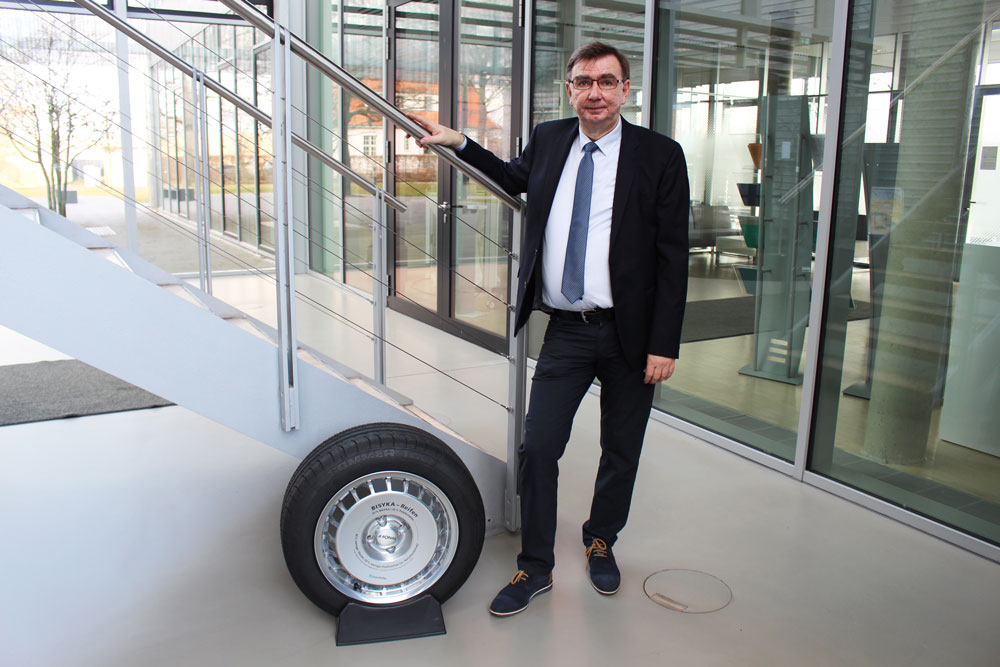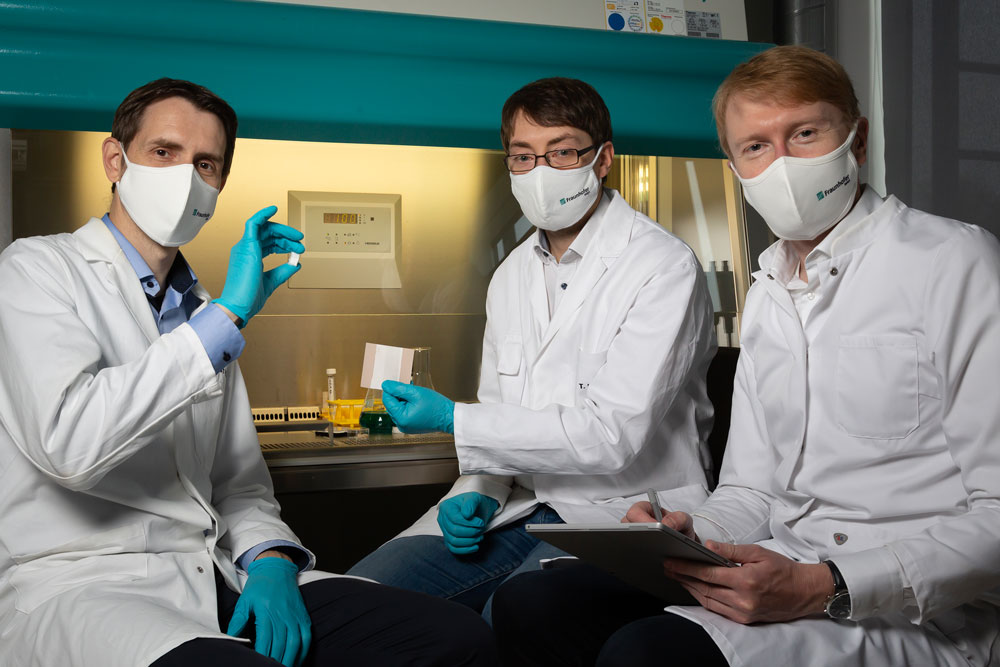Efficient tires and improved wound healing: Fraunhofer IMWS honored with Hugo Junkers Prize
The Fraunhofer Institute for Microstructure of Materials and Systems IMWS in Halle (Saale) has been honored twice this year in the "Most Innovative Projects in Applied Research" category at the Innovation Award of the State of Saxony-Anhalt. A team led by Prof. Mario Beiner received first place for the development of a biomimetic synthetic rubber, the use of which enables lower abrasion in tire applications. Second place goes to Dr Christian Schmelzer, Tobias Hedtke and Dr Marco Götze, who developed an innovative solution to process natural elastin into wound dressing materials.


"We are very proud of these two awards. The successful results prove that our research has a strong application focus and that our technical strengths are in demand on the market. We support our customers in the development of new methods and high-performance materials for application-oriented problems and thus make an important contribution towards technology transfer from science to industry, as the two winning projects also show," says Prof. Matthias Petzold, acting director of the Fraunhofer IMWS.
In the "Biomimetic Synthetic Rubber – BISYKA" research project, which was awarded first place, the Fraunhofer IMWS collaborated with other Fraunhofer institutes. The project succeeded in researching the causes of the unique mechanical properties of natural rubber, transferring these to synthetic rubber and producing tires with reduced abrasion and high value-added potential from the newly developed "biomimetic synthetic rubber" in cooperation with the Fraunhofer Pilot Plant Center for Polymer Synthesis and Processing PAZ in Schkopau and the Fraunhofer Institute for Molecular Biology and Applied Ecology IME in Münster.
"Our focus was on the production of synthetic polyisoprene rubber with improved strain-induced crystallization, as this property has so far only been reserved for natural rubber," explains Prof. Mario Beiner, project manager and scientific head of the "Polymer Applications" business unit at the Fraunhofer IMWS. Using new synthesis routes, the researchers were able to optimize the innovative BISYKA rubber in such a way that it not only shows similarities with natural rubber in terms of its elongation crystallization, but in some cases even surpasses it. This is crucial for the performance of a tire.
"We are delighted with the award and hope to get our idea onto the market quickly. After all, the tires made of BISYKA rubber showed significantly better properties in independent tests. They lose 30 percent less mass than the equivalent made of natural rubber, and tread loss is only half. What's more, our synthetic rubber can in principle be produced on an industrial scale using existing equipment. It therefore offers an excellent alternative to natural rubber, particularly in the area of high-performance truck tires," adds Beiner.
Dr Christian Schmelzer and his team from "matriheal" offer new solutions for chronic and poorly healing wounds with their innovative wound dressings, for which they were awarded second place. The winners convert elastin, which is not processable in its raw form, into a water-soluble derivative, which in turn is processed into absorbable wound dressing materials in the form of nanofiber fleeces and protein sponges. Nanofiber nonwovens, produced by electrospinning, have a microstructure that is particularly attractive to cells. They are particularly suitable for treating large-area wounds such as burns. Elastin-based protein sponges, produced by freeze-drying, have a high swelling capacity and can fill larger tissue defects. Therefore, these materials are suitable for the treatment of deep wounds. The materials developed mimic the mechanical and biochemical properties of skin by combining natural, biodegradable ingredients using highly scalable manufacturing processes.
"We are very pleased that the jury recognized the potential of our innovative wound dressings. Organs and tissues increasingly lose elasticity and eventually their function with advancing age or after injury. Such wounds represent a particular challenge for medical care. Demographic trends are expected to double the number of patients worldwide by the end of the decade. Matriheal meets this need for innovative wound dressings with a process in which natural elastin is obtained cost-effectively from by-products of the food industry," says Dr Christian Schmelzer, founding member of "matriheal" and head of the "Biological and Macromolecular Materials" business unit at the Fraunhofer IMWS.
The winners received their awards today during an online ceremony. A total of 100 projects had applied for the Hugo Junkers Award of the state of Saxony-Anhalt. The prize is awarded annually by the Ministry of Economics, Science and Digitalization of the state of Saxony-Anhalt in the categories "Most Innovative Projects in Basic Research," "Most Innovative Projects in Applied Research" and "Most Innovative Products, Services and Business Models." This year, the category focusing on "Applied Interactive Technologies" was added as a special prize.